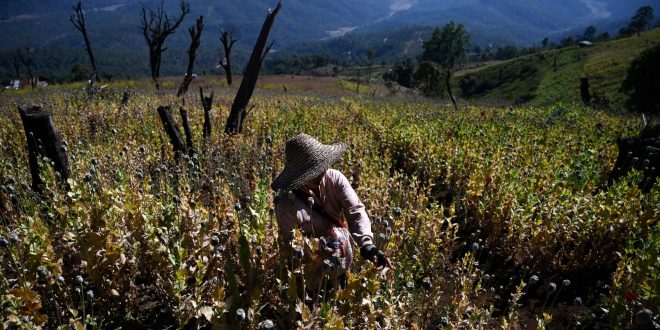AT News
KABUL – According to a recent United Nations report, Myanmar has surpassed Afghanistan to become the world’s largest opium producer. The latest survey by the United Nations Office on Drugs and Crime (UNODC) reveals a nearly 20% increase in opium cultivation in Myanmar over the past year, making it the primary global source of opium.
In stark contrast, Afghanistan’s opium production has seen a sharp decline, plummeting to 330 tons following the Taliban’s prohibition of poppy cultivation.
Myanmar’s opium output has now reached 1,080 tons, significantly impacting its economy and contributing up to 4.1% of its GDP. This surge aligns with the growing instability and conflict in the country since the military coup of 2021. Economic pressures on local farmers have led to a shift towards poppy cultivation.
The UNODC notes that Myanmar’s opium production is at its highest level in over two decades, with advanced cultivation techniques improving yields. Shan State, accounting for 88% of the country’s poppy fields, is the main opium-producing region. Recent intense conflicts in the area have further complicated the situation.
While Myanmar experiences a surge, neighboring Laos and Thailand have not shown similar increases, emphasizing Myanmar’s unique position in regional opium production. Afghanistan’s dramatic reduction underscores the impact of governmental policies on drug cultivation trends.
The economic reliance on opium in Myanmar highlights the urgent need for alternative economic opportunities to steer away from illicit crops. Addressing this challenge poses major hurdles for local anti-drug efforts, necessitating diverse strategies that encompass law enforcement, economic growth, and regional collaboration.
Myanmar’s instability has fueled illicit activities, underscoring the necessity for comprehensive approaches to address both drug supply and demand in the region.
 Afghanistan Times
Afghanistan Times




